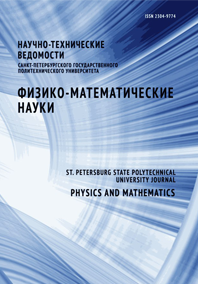Structured biomolecular films for microelectronics
In order to develop the technology for dehydration of biomolecular films with specified parameters under electrostatic field (EF), the structures of dehydrated films obtained from aqueous solutions of albumin molecules and deposited on the solid glass substrates in the EF have been studied, dehydration conditions being varied. The resulting structures were examined under microscope (with recording the micrographs) in the light passing through the films and in the one reflected from the substrates. An analysis of the micrographs made it possible to reveal characteristic inhomogeneity arising in the films and recognize their main types. The optimal regions of parameters in which the film production modes were predominantly realized were found. For the first time, a "bubble" model for interpretation of the spatially inhomogeneous structure of dehydrated biomolecular films was put forward. In the model, the processes conditioned by dissolved gases in the initial solutions were taken into account.


